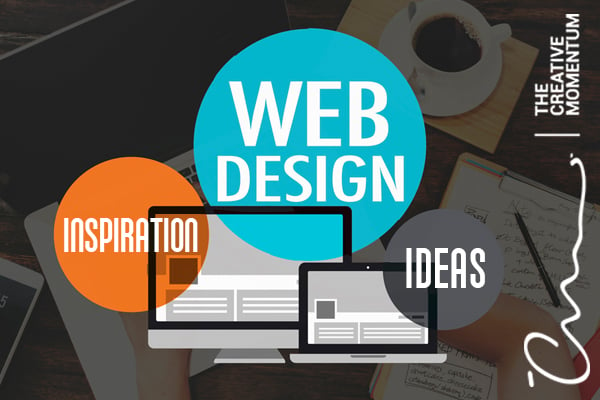Exploring the Necessary Concepts of Efficient Web Style for Modern Companies
Central to this technique are principles such as user-centered design, aesthetic power structure, and responsive formats, which jointly boost individual interaction and fulfillment. The ramifications of these principles extend past plain looks, triggering a better exam of their role in fostering count on and loyalty among customers.
User-Centered Design
User-Centered Style (UCD) is a critical strategy in internet growth that prioritizes the requirements and experiences of users throughout the layout process. By positioning individuals at the leading edge, UCD guarantees that internet sites are not only useful yet additionally intuitive and interesting. This methodology involves comprehensive study, consisting of customer interviews, surveys, and usability testing, to gather understandings on individual actions, choices, and discomfort factors.
The UCD process generally follows a number of stages: comprehending customer needs, ideation, prototyping, and testing. In the first stage, designers perform detailed user study to notify their style decisions. Subsequent stages include producing wireframes and prototypes that personify the customer's needs, enabling iterative testing and improvement based upon customer feedback.
Embracing a UCD method improves customer fulfillment, eventually resulting in boosted interaction and retention. Internet sites designed with UCD concepts are most likely to resonate with users, as they attend to specific obstacles and supply tailored remedies. In an age where customer experience is extremely important, companies that accept UCD can gain a competitive edge, ensuring their electronic platforms effectively meet the developing assumptions of their audience.
Visual Power Structure
When making a site, comprehending aesthetic pecking order is important for guiding customers' focus and improving their overall experience. Web design agency. Aesthetic power structure describes the arrangement and presentation of components on a web page, which influences just how customers perceive and interact with content. By strategically using dimension, shade, comparison, and spacing, developers can develop a clear path for users to comply with, stressing important details and calls to activity
The most effective aesthetic hierarchies utilize a mix of typography and images to establish focal points. Larger fonts and bold shades can draw instant interest to headlines, while lighter tones and smaller sizes can be utilized for second details. Additionally, white area plays an important function in separating aspects, preventing clutter, and enabling individuals to soak up web content without feeling bewildered.
Including a rational flow right into the layout is additionally important. Individuals ought to have the ability to browse naturally from one section to one more, led by aesthetic signs. Inevitably, a well-executed aesthetic hierarchy not just boosts use yet additionally adds to the general visual allure of the internet site, fostering involvement and motivating customers to check out further.
Receptive Design

Applying responsive layout is essential to accommodate the expanding variety of mobile customers. Studies indicate that a considerable part of internet website traffic currently stems from smart phones, making it important for businesses to prioritize this design ideology. A responsive website not only boosts individual engagement yet additionally positively impacts search engine optimization, as online search engine prefer mobile-friendly internet sites in their rankings.
Moreover, receptive layout streamlines the maintenance and upgrading processes, as a solitary site can serve all devices, minimizing the requirement for several variations. This effectiveness makes it possible for organizations to present a constant brand name message and user experience throughout platforms. Eventually, receptive style is not just a visual option; it is a strategic requirement in today's electronic landscape.
Fast Loading Times

Numerous aspects add to loading times, including image optimization, my blog server action time, and making use of reliable coding practices. Huge, unoptimized photos can substantially decrease a website, so using layouts like WebP or pressing images without jeopardizing high quality is crucial. Additionally, employing content distribution networks (CDNs) can lessen latency by distributing material throughout several web servers, bringing it closer to the individual's area.
Moreover, decreasing HTTP demands and using asynchronous packing for JavaScript can improve the rendering procedure. Regularly auditing internet site efficiency with tools like Google PageSpeed Insights or GTmetrix enables services to determine bottlenecks and implement necessary renovations. By concentrating on rapid filling times, business not just boost customer experience yet likewise improve internet search engine positions, ultimately driving even more web traffic and raising profits.
Consistency and Branding
Establishing uniformity in branding is vital for producing Website a natural user experience throughout all electronic platforms. This uniformity not just enhances brand acknowledgment but additionally fosters depend on and commitment amongst customers. When businesses maintain uniformity in their visual elementsâEUR" such as font styles, shades, logo designs, and imageryâEUR" they interact a clear and specialist identification that reverberates with their target market.
Furthermore, consistent branding across sites, social networks, and e-mail communications guarantees that users can easily recognize and engage with the brand, no matter of the system they are making use of. This acknowledgment is essential in a saturated electronic atmosphere where consumers are bombarded with information and options.
Along with visual consistency, the tone and messaging must likewise line up with the brand's identity. A unified voice across all material strengthens the brand's values and goal, making it extra relatable and reliable to consumers.
To accomplish this, services ought to develop detailed brand name standards that lay out the key elements of their branding strategy. By sticking to these standards, business can efficiently align all web design initiatives with their overarching brand name story, inevitably boosting customer experience and driving interaction.
Verdict
To conclude, effective web style for modern-day businesses depends upon numerous crucial concepts, including user-centered design, aesthetic power structure, receptive formats, quick packing times, and consistent branding. Focusing on individual needs through research and testing boosts interaction and retention, while a well-structured visual hierarchy facilitates smooth navigating. Furthermore, responsive style fits diverse gadgets, making sure optimal user experience. By home incorporating these elements, companies can develop an engaging online existence that cultivates user fulfillment and constructs long lasting trust fund.